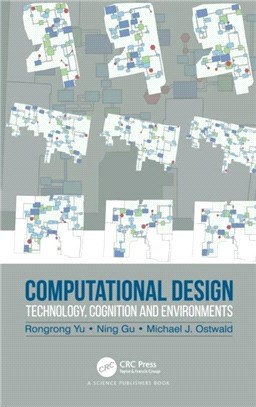Computational Design:Technology, Cognition and Environments
商品資訊
ISBN13:9780367203061
出版社:PBKTYFRL
作者:Rongrong Yu; Ning Gu; Michael J. (University of Newcastle Ostwald Australia)
出版日:2021/05/15
裝訂/頁數:精裝/190頁
規格:15.6cm*23.4cm (高/寬)
定價
:NT$ 8700 元若需訂購本書,請電洽客服 02-25006600[分機130、131]。
商品簡介
相關商品
商品簡介
New computational design tools have evolved rapidly and been increasingly applied in the field of design in recent years, complimenting and even replacing the traditional design media and approaches. Design as both the process and product are changing due to the emergence and adoption of these new technologies. Understanding and assessing the impact of these new computational design environments on design and designers is important for advancing design in the contemporary context.
Do these new computational environments support or hinder design creativity? How do those tools facilitate designers' thinking? Such knowledge is also important for the future development of design technologies. Research shows that design is never a mysterious non-understandable process, for example, one general view is that design process shares a common analysis-synthesis-evaluation model, during which designers interact between design problem and solution spaces. Understanding designers' thinking in different environments is the key to design research, education and practice.
This book focuses on emerging computational design environments, whose impact on design and designers have not been comprehensively and systematically studied. It comprises three parts. The history and recent developments of computational design technologies are introduced in Part I.
The main categories of technologies cover from computer-aided drafting and modelling tools, to visual programming and scripting tools for algorithmic design, to advanced interfaces and platforms for interactions between designers, between designers and computers, and between the virtual environment and the physical reality. To critically explore design thinking, especially in these new computational design environments, formal approaches to studying design thinking and design cognition are introduced and compared in Part II, drawing on literature and studies from the 70s to the current era. Part III concludes the book by exploring the impact of different computational design technologies on design and designers, using a series of case studies conducted by the author team building on their close collaboration over the past five years.
The book offers new insights into designers' thinking in the rapidly evolving computational design environments, which have not been critically and systematically studied and reported in the current literature. The book is meant for design researchers, educators and students, professional practitioners and consultants, as well as people who are interested in computational design in general.
Do these new computational environments support or hinder design creativity? How do those tools facilitate designers' thinking? Such knowledge is also important for the future development of design technologies. Research shows that design is never a mysterious non-understandable process, for example, one general view is that design process shares a common analysis-synthesis-evaluation model, during which designers interact between design problem and solution spaces. Understanding designers' thinking in different environments is the key to design research, education and practice.
This book focuses on emerging computational design environments, whose impact on design and designers have not been comprehensively and systematically studied. It comprises three parts. The history and recent developments of computational design technologies are introduced in Part I.
The main categories of technologies cover from computer-aided drafting and modelling tools, to visual programming and scripting tools for algorithmic design, to advanced interfaces and platforms for interactions between designers, between designers and computers, and between the virtual environment and the physical reality. To critically explore design thinking, especially in these new computational design environments, formal approaches to studying design thinking and design cognition are introduced and compared in Part II, drawing on literature and studies from the 70s to the current era. Part III concludes the book by exploring the impact of different computational design technologies on design and designers, using a series of case studies conducted by the author team building on their close collaboration over the past five years.
The book offers new insights into designers' thinking in the rapidly evolving computational design environments, which have not been critically and systematically studied and reported in the current literature. The book is meant for design researchers, educators and students, professional practitioners and consultants, as well as people who are interested in computational design in general.
主題書展
更多
主題書展
更多書展今日66折
您曾經瀏覽過的商品
購物須知
外文書商品之書封,為出版社提供之樣本。實際出貨商品,以出版社所提供之現有版本為主。部份書籍,因出版社供應狀況特殊,匯率將依實際狀況做調整。
無庫存之商品,在您完成訂單程序之後,將以空運的方式為你下單調貨。為了縮短等待的時間,建議您將外文書與其他商品分開下單,以獲得最快的取貨速度,平均調貨時間為1~2個月。
為了保護您的權益,「三民網路書店」提供會員七日商品鑑賞期(收到商品為起始日)。
若要辦理退貨,請在商品鑑賞期內寄回,且商品必須是全新狀態與完整包裝(商品、附件、發票、隨貨贈品等)否則恕不接受退貨。
























